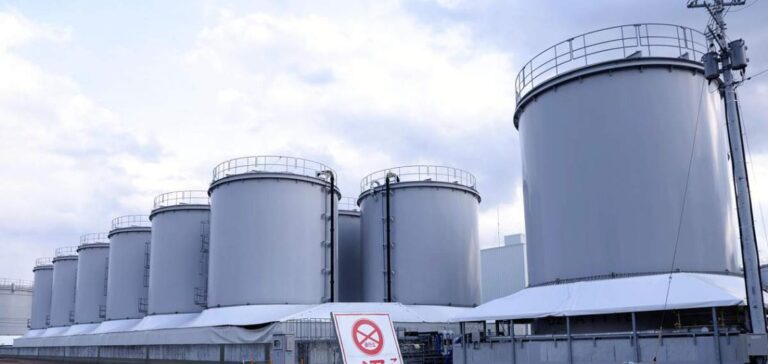Since early February, Tokyo Electric Power Company (Tepco) has launched a new phase in the lengthy process of decommissioning the Fukushima Daiichi nuclear plant. The Japanese operator has started dismantling the massive treated water tanks that clutter the site to make room for the management of nuclear debris still trapped in the damaged reactors.
A necessity for nuclear debris recovery
To date, nearly 1.3 million tons of water treated by the Advanced Liquid Processing System (ALPS) are stored on-site in more than a thousand tanks. This water, originating from precipitation, groundwater, and reactor cooling, occupies a significant portion of the plant. “Today, there is no free land at Fukushima Daiichi,” said Naoki Maeshiro, a project manager at Tepco.
However, the company must clear space to securely store approximately 880 tons of radioactive debris still lodged in reactors 1, 2, and 3, which were damaged in the March 2011 disaster. The removal of water tanks is thus a crucial requirement for progressing in the plant’s decommissioning program.
Complex operations under strict supervision
The dismantling of welded tanks is a first for Tepco, even though the company has previously removed other water containers. The clearing of the necessary space is expected to be completed by March 2026. Once the areas are freed, the operator plans to build storage facilities for the highly radioactive materials extracted from the reactors.
To minimize risks, Tepco has developed a telescopic arm capable of extracting these debris remotely. This device, tested on an undamaged reactor, is designed to ensure operational safety by limiting workers’ exposure to radiation. Initial trials have already successfully retrieved a 0.7-gram sample of melted fuel, which is currently being analyzed in a laboratory near Tokyo.
Toward large-scale extraction by 2030
The analysis of this sample will help better understand the chemical structure and radioactivity level of the debris. These data are essential for determining the most suitable extraction method: wet or dry retrieval. A second sampling is scheduled between March and April to further refine this research.
Tepco aims to begin large-scale extraction by 2030. According to the operator, the complete decommissioning of the plant could take between thirty and forty years. In the meantime, each step in the recovery of nuclear debris marks significant progress in managing the Fukushima Daiichi site.





















